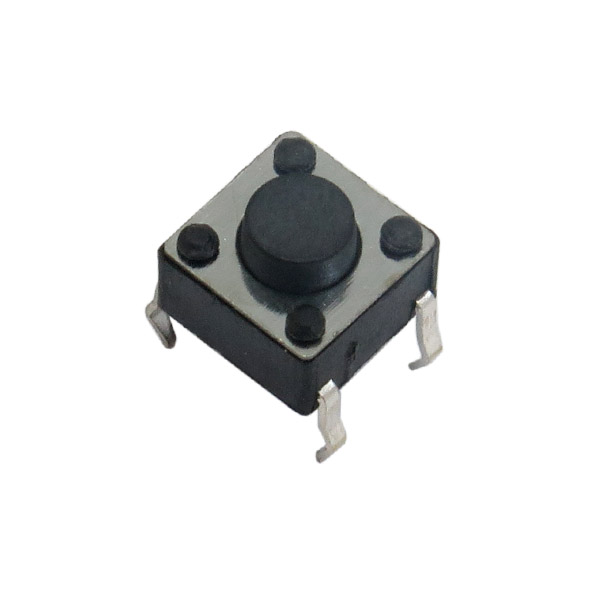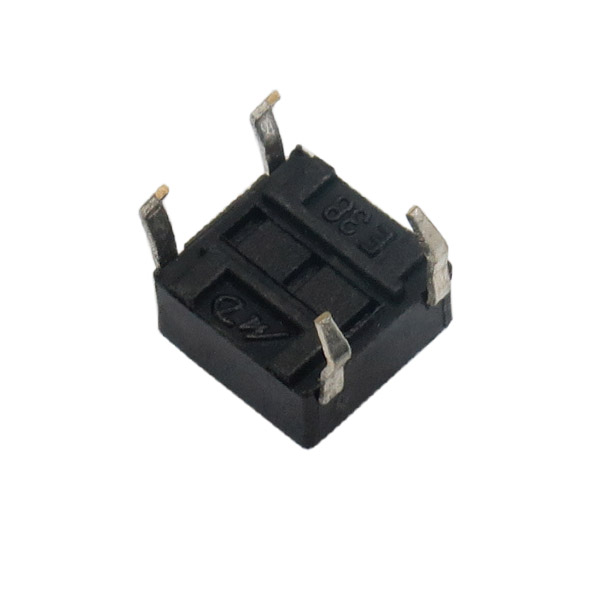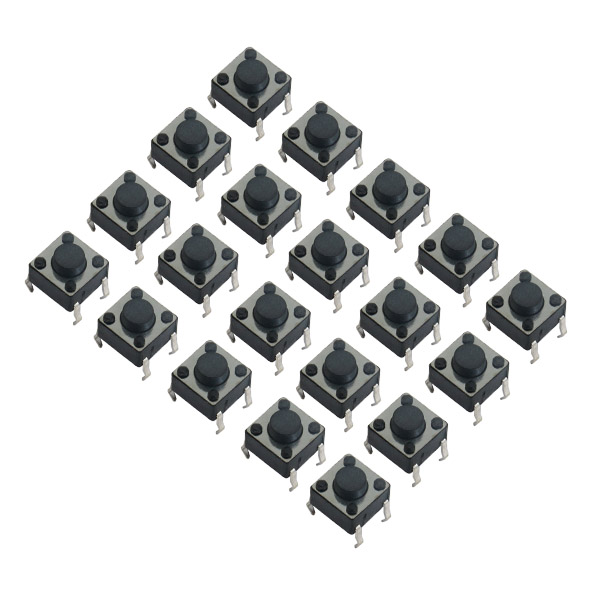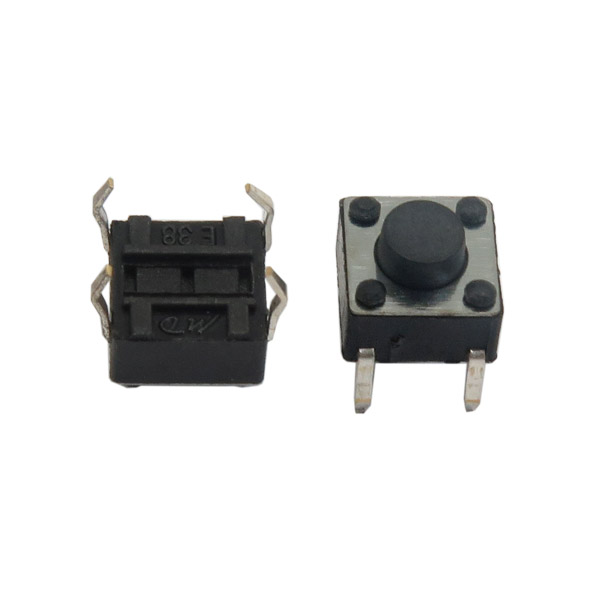26,830 تومان
کالا موجود استموجودی انبار : 167 عدد
علاقه مندان : 7 نفر
وضعیت : فعال
تعداد مرجوعی : 0
دنبال کنندگان : 8 نفر
قدمت : 12 سال و 2 ماه و 28 روز
وزن : 54 گرم
کل فروش : 11672 عدد
تعداد سفارش ها : 1449 سفارش
4 از 5.0 با 9 رای
کلید فشاری دیپ 4 پین
دیپ سوئیچ فشاری 4 پین یک قطعه الکترونیکی کوچک و پرکاربرد است که برای قطع و وصل جریان در مدارهای الکترونیکی استفاده میشود. این سوئیچ ها از نوع tactile هستند و در حالت عادی باز میباشند. به این معنا که تا زمانی که دکمه فشار داده نشود، جریان برقرار نمیشود و پس از رها کردن دکمه، مسیر قطع میشود. سوئیچ فشاری 4 پین برای مدارهای PCB مناسب است و میتواند سیگنال ورودی را به تجهیزات مختلف مانند SCR منتقل کند.
این سوئیچ با ابعاد 6x6x5 میلی متر به راحتی روی برد نصب میشود و دارای 4 پین اتصال است. مقاومت تماس آن 0.03≥ اهم و مقاومت عایقی 100≤ مگا اهم میباشد. جریان نامی مستقیم (DC) این قطعه 12 ولت 50 میلی آمپر و ولتاژ تحمل متناوب ( AC) آن 250 ولت است و عملکرد آن در دمای 30- تا 70 درجه سانتی گراد تضمین شده است. کلید فشاری PCB در نوع معمولی موجود است و نصب آن میتواند به صورت Insert Hole Terminals یا Surface Mounted Terminals باشد.
این سوئیچ با ابعاد 6x6x5 میلی متر به راحتی روی برد نصب میشود و دارای 4 پین اتصال است. مقاومت تماس آن 0.03≥ اهم و مقاومت عایقی 100≤ مگا اهم میباشد. جریان نامی مستقیم (DC) این قطعه 12 ولت 50 میلی آمپر و ولتاژ تحمل متناوب ( AC) آن 250 ولت است و عملکرد آن در دمای 30- تا 70 درجه سانتی گراد تضمین شده است. کلید فشاری PCB در نوع معمولی موجود است و نصب آن میتواند به صورت Insert Hole Terminals یا Surface Mounted Terminals باشد.
مقاومت تماس پایدار و عمر طولانی تا 10 میلیون بار استفاده از ویژگی های بارز این سوئیچ است. دیپ سوئیچ در پروژه های صنعتی و الکترونیکی روزمره مانند کنترل پنل ها، کیبوردها، مدارهای حسگر و پروژه های DIY کاربرد گسترده دارد. همچنین، این سوئیچ ها میتوانند به صورت تک سوئیچ 4 پایه یا مجموعه ای از چند سوئیچ نصب شوند که انعطاف پذیری طراحی مدار را بالا میبرد. سوئیچ فشاری 4 پین یک قطعه قابل اعتماد و بادوام است که برای انواع مدارهای الکترونیکی و تجهیزات صنعتی توصیه میشود و ترکیب مشخصات فنی و کاربردهای متنوع آن، آن را به گزینه ای ایده آل برای طراحی مدارهای دقیق تبدیل میکند.
کاربرد :
- کنترل روشنایی در مدارهای الکترونیکی کوچک
- راه اندازی مدارهای SCR و تجهیزات کنترلی
- استفاده در کیبوردها و پنل های کنترل صنعتی
- حسگر مکانیکی برای موقعیت قطعات در دستگاه ها
- استفاده در پروژه های DIY و رباتیک
- تحریک و راه اندازی مدارهای الکترونیکی با ولتاژ پایین
- اتصال و قطع موقت جریان در بردهای PCB
مشخصات :
- جریان مستقیم 12 ولت (DC 12V) با ظرفیت 50 میلی آمپر (50mA)
- ولتاژ تحمل: 250 ولت AC
- مقاومت تماس: 0.03≥ اهم
- مقاومت عایقی: 100≤ مگا اهم
- محدوده دمایی عملکرد: 30- تا 70 درجه سانتی گراد
- طول عمر عملیاتی: قابلیت تحمل 100 هزار تا 10 میلیون بار استفاده
- تعداد پایه: 4 پایه
- ابعاد: 6 x 6 x 5 میلی متر
- نوع سوئیچ: فشاری از نوع tactile ، معمولی یا مهر و موم شده
- نوع نصب روی برد: Insert Hole Terminals یا Surface Mounted Terminals
- حالت پایه ها: لحظه ای و باز در حالت عادی (Normally Open)
Features:
Size: 6 x 6 x 5mmPin Number: 4pin
Temperature: -30 ~ +70 Centigrade
Withstand Voltage: 250VAC
Rated Load: DC 12V 50mA
Contact Resistance: ≤0.03Ω
Insulation Resistance: ≥100MΩ




